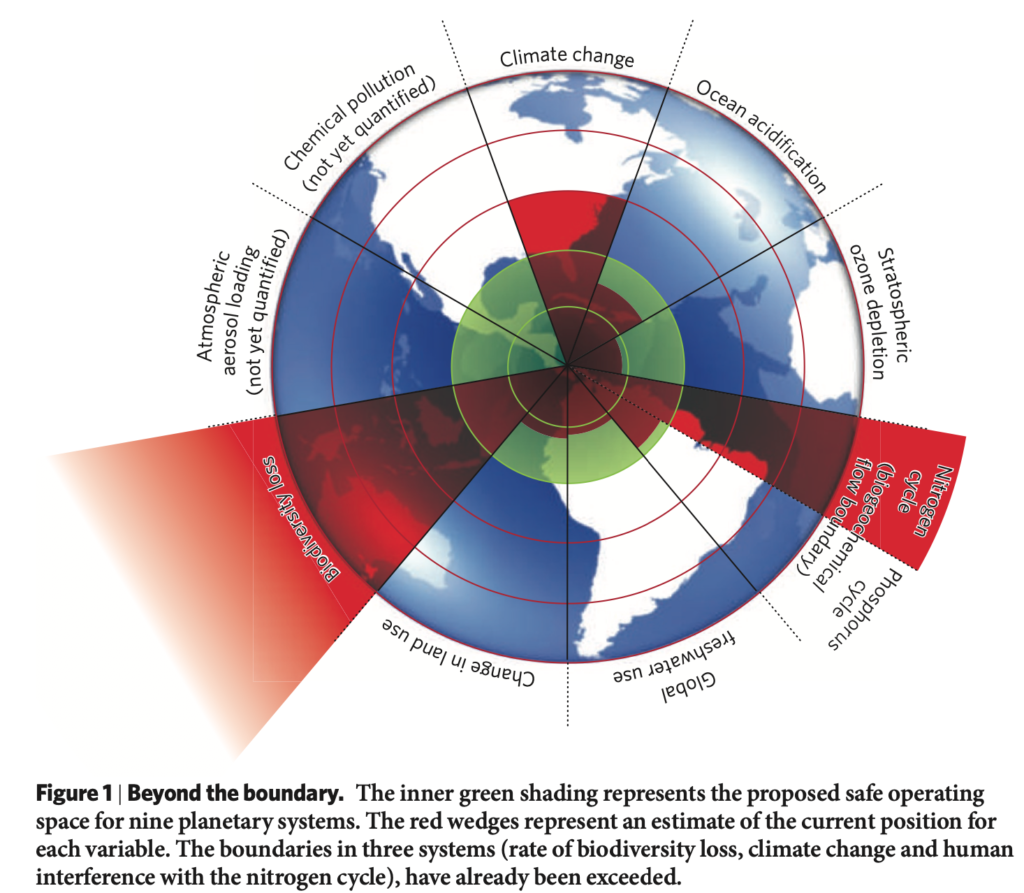Integrating zoonotic viruses into the planetary boundaries creates a unique approach to defining a ‘safe space’ in human and environmental interaction. Planetary boundaries for ocean acidification, climate change, biodiversity loss, change in land use, stratospheric ozone depletion, and a few other divisions which are all impacted by humans have previously been named. These categories have boundaries in which humanity can operate under a safe operating space, however, if these boundaries are exceeded there is an increased risk of damage. It is difficult to define these boundaries and the risks that come with exceeding them, but with continued scientific research, the consequences are becoming clearer. Ultimately, scientists have determined that if humans continue to interact with the environment in the way that they are, there will be irreversible and detrimental impacts on the environment. Human health largely depends on a healthy planet, and as the environment deteriorates, so will our health.
Human health is a hot topic as we are experiencing a global pandemic due to the zoonotic virus, COVID-19. The rapid spread of this virus has shocked the world and emphasizes the importance of public health measures. There will be new viruses so we must study and understand where zoonotic viruses reside, how they successfully transmit and spread, and what we can do to mitigate their risk. Creating a planetary boundary through qualitative and quantitative measurements and recommendations is a possible proposal to highlight how the zoonotic disease is a real threat that is impacted by human action.
The Lancet Planetary Health journal underscores articles that are focused on the sustainable development goals (SDGs), the global environment, and humans. The journal integrates planetary health with public and global health. Creating this piece of writing can produce a new way of thinking about how the environment and public health are dependent on each other and what boundaries and mitigation techniques we must employ to ensure the health of our planet in the future.

